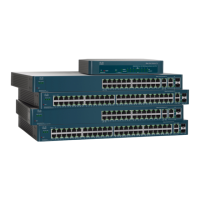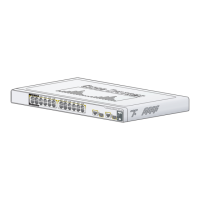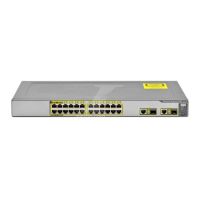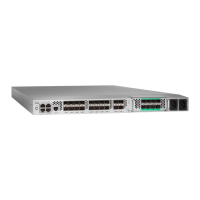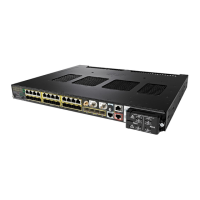IP Configuration
IPv6 Management and Interfaces
Cisco 500 Series Managed Switch Administration Guide 390
18
• Metric (Layer 3)—Cost of this hop.
• State—Specifies the router status. The values are:
-
Reachable
—Router is known to be reachable.
-
Unreachable
—Router is known to be unreachable.
STEP 2 Click Add to add a static default router.
STEP 3 Enter the following fields:
• Link Local Interface (Layer 2)—Displays the outgoing Link Local interface.
• Next Hop Type—The IP address of the next destination to which the packet
is sent. This is composed of the following:
- Global—An IPv6 address that is a global Unicast IPV6 type that is visible
and reachable from other networks.
- Link Local—An IPv6 interface and IPv6 address that uniquely identifies
hosts on a single network link. A link local address has a prefix of FE80,
is not routable, and can be used for communication only on the local
network. Only one link local address is supported. If a link local address
exists on the interface, this entry replaces the address in the
configuration.
- Point-to-Point—A Point-to-point tunnel.
• Interface (Layer 3)—Displays the outgoing Link Local interface.
• Default Router IPv6 Address—The IP address of the static default router
• Metric (Layer 3)—Enter the cost of this hop.
STEP 4 Click Apply. The default router is saved to the Running Configuration file.
Defining IPv6 Neighbors Information
The IPv6 Neighbors page
enables
configuring and viewing the list of IPv6
neighbors on the IPv6 interface. The IPv6 Neighbor Table (also known as IPv6
Neighbor Discovery Cache) displays the MAC addresses of the IPv6 neighbors
that are in the same IPv6 subnet as the device. This is the IPv6 equivalent of the
IPv4 ARP Table. When the device needs to communicate with its neighbors, the
device uses the IPv6 Neighbor Table to determine the MAC addresses based on
their IPv6 addresses.
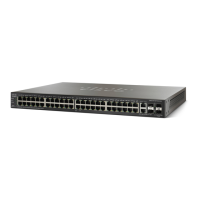
